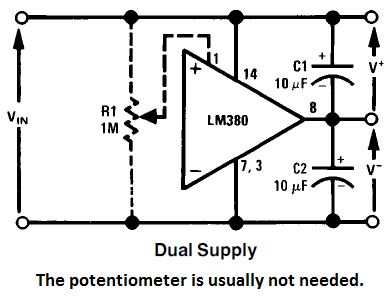hello
In an applications note about the LM380 , it shows that it can be used to make a simple dual power supply:
I applied the configuration mentioned in the application note, and it seemed an outstanding solution for my problem (I needed a compact dual supply for an experiment for my students) and for what I need. but I was very disappointed after I implemented the circuit, because I found that the LM380 goes very hot even if there is no load at all!
why it goes that hot even there is no load?


